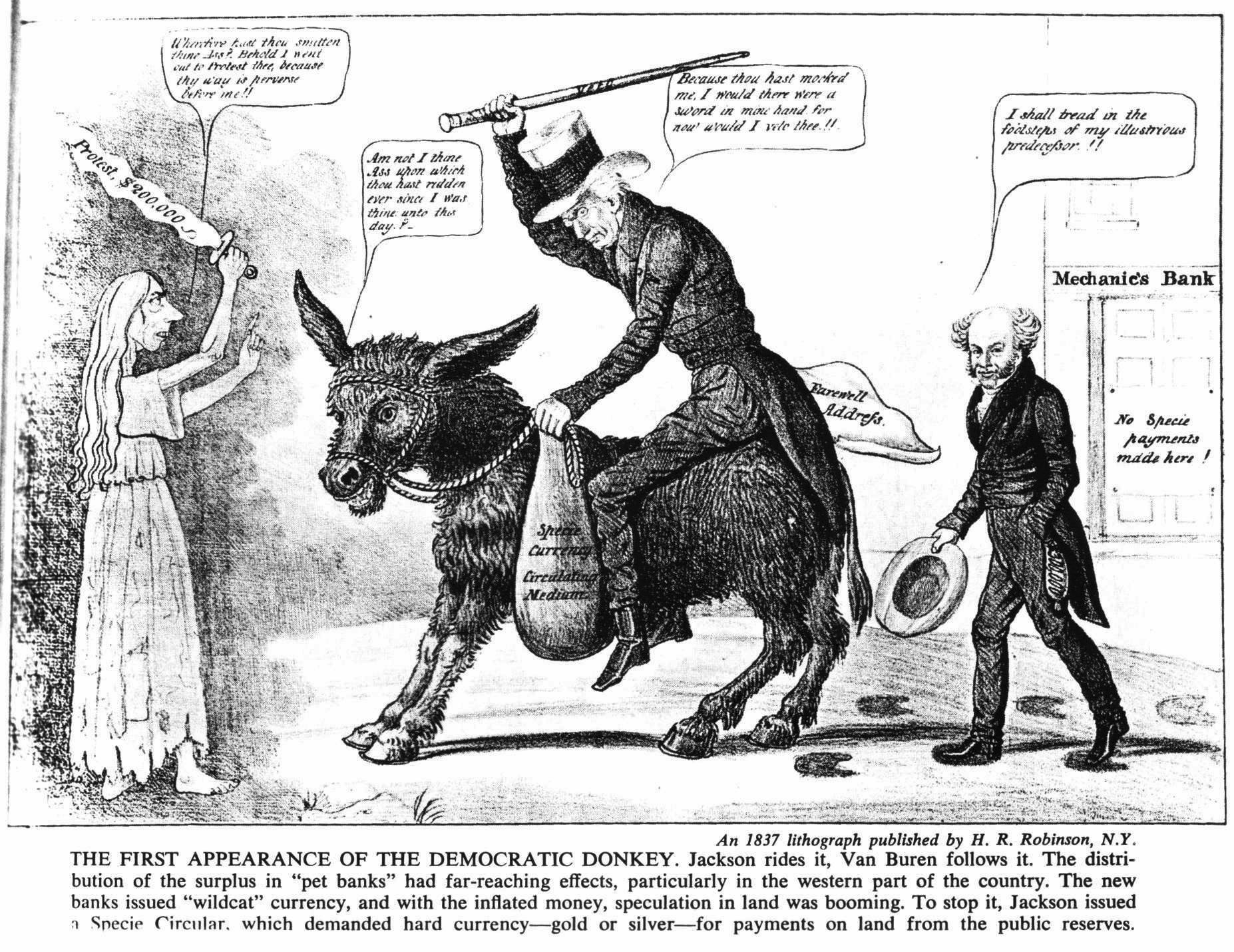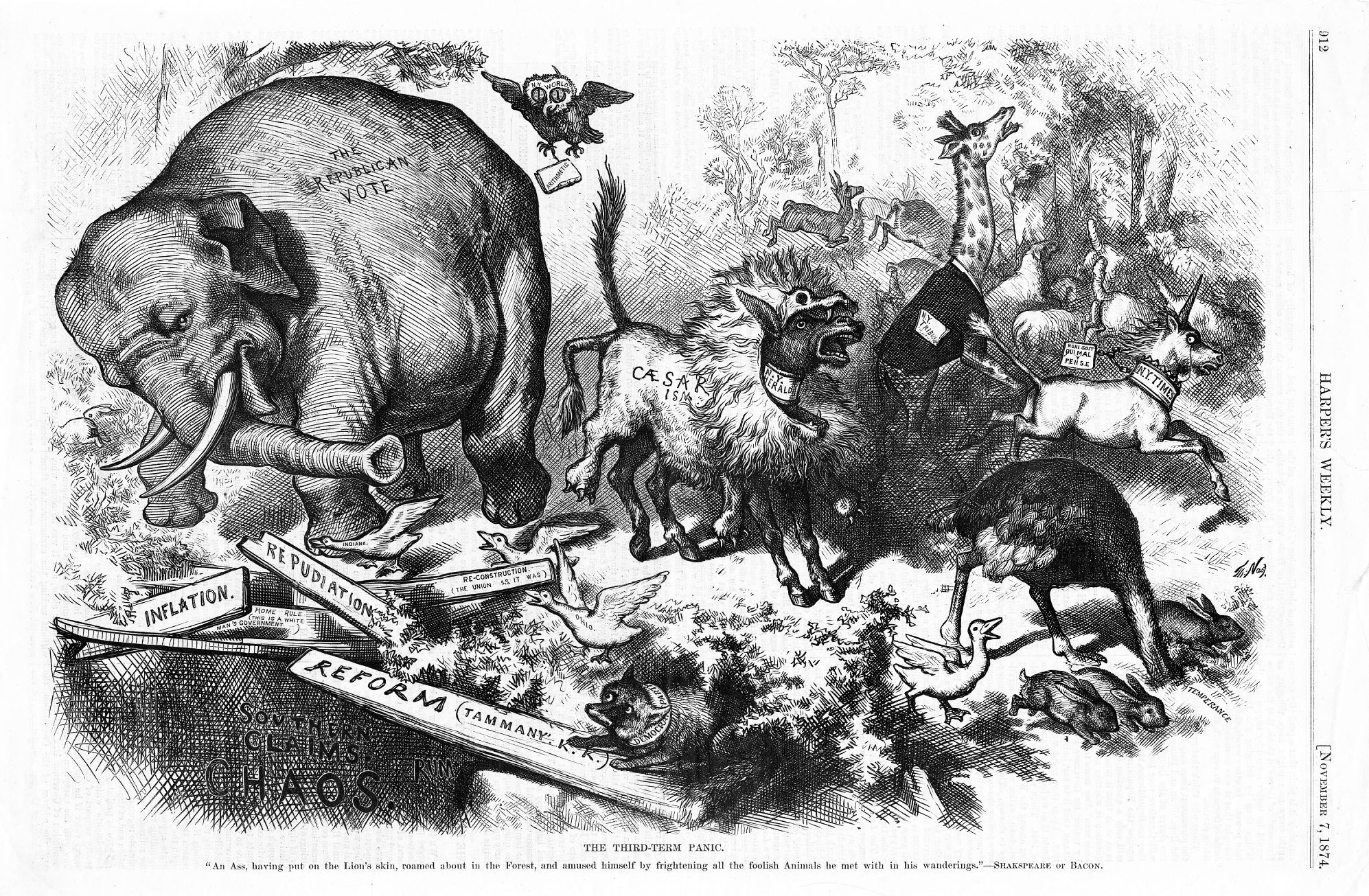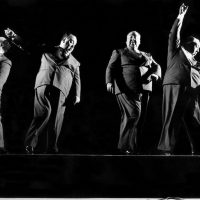Zoos or Lose
In 1828, when Andrew Jackson was running for president, his opponents were fond of referring to him as a jackass (if only such candid discourse were permissible today). Emboldened by his detractors, Jackson embraced the image as the symbol of his campaign, re-branding the donkey as steadfast, determined, and willful, instead of wrong-headed, slow, and obstinate. Throughout his presidency, the symbol remained associated with Jackson and, to a lesser extent, the Democratic partyÂ
In 1874, cartoonist Thomas Nast, represented the Democratic press as a donkey in lion’s clothing (though the party itself is shown as a shy fox), expressing the cartoonist’s belief that the media were acting as fear mongers, propagating the idea of Ulysses S. Grant as a potential American dictator. In Nast’s donkey-in-lion’s-clothing cartoon, the elephant –representing the Republican vote– was running scared toward a pit of chaos and inflation. The rationale behind the choice of the elephant is unclear, but Nast may have chosen it as the embodiment of a large and powerful creature, though one that tends to be dangerously careless when frightened. Alternately, the political pachyderm may have been inspired by the now little-used phrase “seeing the elephant,†a reference to war and a possible reminder of the Union victory. Whatever the reason, Nast’s popularity and consistent use of the elephant ensured that it would remain in the American consciousness as a Republican symbol
[Political Animals: Republican Elephants and Democratic Donkeys]


 06. Nov, 2018
06. Nov, 2018 


























